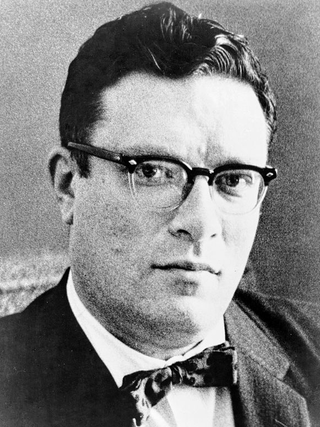Religion
Compulsive Writing: Remembering Asimov on His 100th Birthday
What does it take to produce nearly 500 books?
Posted December 31, 2019
Although he was no Tolstoy or Dostoevsky, few writers of any age surpassed Isaac Asimov in sheer breadth and fecundity. In the fiction category, Asimov’s “Foundation” trilogy was voted the best all-time series in science fiction, and his story “Nightfall” is often considered the best story in the history of the genre. But he also churned out titles in natural science, Biblical studies, and literary criticism.

Asimov may be one of the most prolific writers of all time. He published approximately 500 books and was often referred to as a “writing machine.” Time Magazine once declared that “No author in history has ever written more books about more subjects than Isaac Asimov.” Said Asimov himself, “I write as a result of some inner compulsion, and I’m not always in control of it.”
Born in Russia on January 2, 1920, his family emigrated to the United States in 1923, and he grew up in Brooklyn. After attending public schools, he received his bachelor's, master's, and doctoral degrees in chemistry from Columbia. He also worked as a civilian chemist during World War II. He took a job in the medical school at Boston University but was soon earning far more money as a writer.
One of the great stories about Asimov concerns a spoof chemistry article he published, “The Endochondric Properties of Resublimated Thiotimoline.” At the end of his 1948 doctoral dissertation defense, one of the examiners turned to him and asked, “What can you tell us about the chemical properties of thiotimoline?” Recovering his composure, he was relieved to hear himself addressed as “Dr. Asimov.”
Asimov’s dedication to writing could be explained in part by the fact that as a child he was clumsy and never learned to ride a bike or swim. He also harbored phobias. For example, he disliked open spaces, which kept him at his desk for many hours every day. In a deep irony for a science fiction writer whose characters roamed the galaxy, he was also afraid of flying.
Asimov’s intellectual playfulness was legendary. He once proposed that pretenders could be distinguished from real chemists simply by asking them to read the word “unionized.” A layperson would read it as related to labor unions, while a chemist would think of an element or compound in an uncharged state, un-ionized.
Asimov was so forward-thinking that what at the time struck many as outlandish in his writings turned out to be eminently practical. In his 1950 novel, I, Robot, Asimov formulated the three rules for robots: Robots may not injure a human or by inaction allow a human to be injured. Robots must obey human orders. Robots must protect their own existence.
Asimov’s writing stimulated my own interest in science and medicine. His book, Fantastic Voyage, tells the story of a submarine medical team that is minified and injected into the bloodstream of a brain-damaged scientist. It certainly did nothing to blunt my adolescent attraction to the film—on which Asimov’s book was based—that it prominently featured Raquel Welch.
Asimov was also deeply skeptical. He roundly criticized claims regarding the paranormal, and he had no truck with religion or belief in God. He wrote, “Emotionally, I am an atheist. I don’t have the evidence to prove that God does not exist, but I so strongly suspect he doesn’t that I don’t want to waste my time.”
Writing seems to have been an integral part of Asimov’s life since the age of 11 when he began imitating books he liked. Receiving his first typewriter at age 16, he published his first work in a high school literary journal in 1934 and he sold his first story in 1938. Asimov became such an efficient writer that he dismissed word processors, for whose editing functions he had very little use.
When Asimov received rejections or requests for major revisions, he characteristically disregarded them, instead simply submitting his works to another editor, who often accepted them. Instead of investing time in rewriting, he wrote something entirely new, claiming that he “had infinitely more fun in the process.”
Concerning his “compulsion to write,” Asimov described it as “the only thing about myself I consider to be severe enough to warrant psychoanalytic treatment. That means that my idea of a pleasant time is to go up to my attic, sit at my electric typewriter (as I am doing right now), and bang away, watching the words take shape like magic before my eyes.”
Having suffered a heart attack and undergone triple bypass surgery, Asimov was once asked by a physician what he would do if he were told he had only six months to live. Asimov’s answer: “Type faster!” He once said, “Everything but writing is done only occasionally and under protest. Me and my typewriter—that’s all there is in the world.”
When he died at age 72, his friends remembered Asimov as a man who suffered from writer’s block but once, “And it was the worst 10 minutes of his life.” The ubiquity of Asimov in our culture is reflected in an anecdote about his non-fiction writing, which he claimed to have modeled on the work of Martin Gardner. When Asimov told him this, however, Gardner claimed to have been inspired by Asimov.
In the end, Asimov’s incredible output seems to be rooted in three factors. First, he made lots of commitments to write, which prevented him from “lingering” on anything. Second, his daily routine was to sit down at the typewriter at 7:30 a.m. and work until 10:00 each night. And finally, he improved with time, saying, “Writing is more fun than ever, and the longer I write, the easier it gets.”




